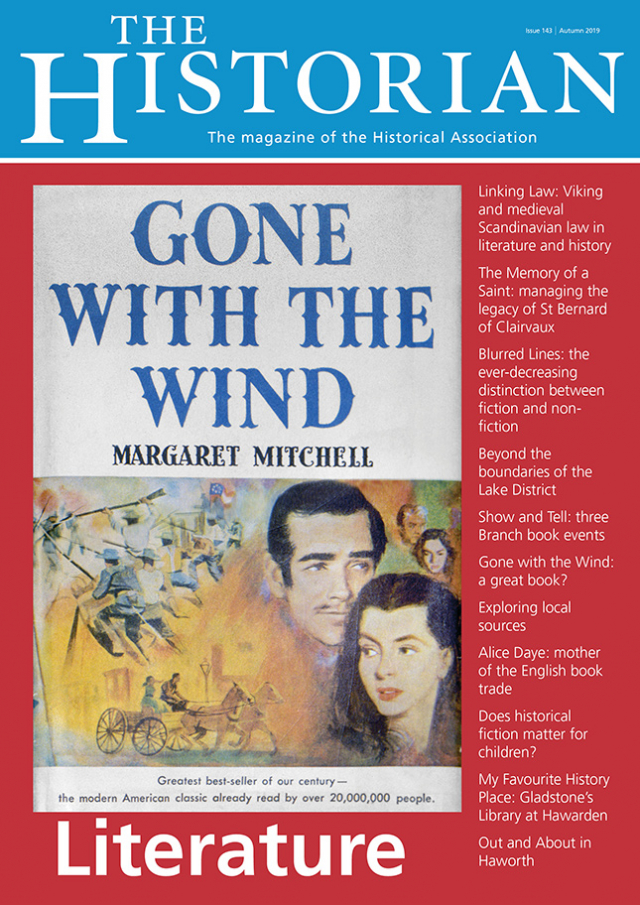The Historian 143: Out now
The magazine of the Historical Association

Editorial: Literature
Read The Historian 143: Literature
Back in May, at the Historical Association Conference in Chester, Fern Riddell’s keynote lecture on ‘Uncomfortable Histories’ set out to overturn the commonly-held view that the Victorian age was naïve and prudish. In the twenty-first century, the instantly recognisable image of Queen Victoria is that of a cold, drab figure in mourning. But, in her diary, the young queen wrote movingly of seeing Prince Albert naked for the first time on their wedding night. There were even adverts for birth control on the front page of newspapers. Evidence from court cases shows that the general view was that people should be allowed to live as they wished. Of course, there are some obvious exceptions, such as Oscar Wilde’s high-profile trial for sodomy and gross indecency. Fern pointed out the difference between what the dominant powers said about sex, and what the culture of the time actually shows was going on. And if you want to understand a period in history, she said, you need to look at its literature.
This edition of The Historian is loosely themed around that belief, and around the links between history and literature more broadly. While Fern Riddell used her keynote to complicate our view of the Victorians with the ‘uncomfortable’ aspects of sex and violence, recent research has rounded our view of the Viking Age too, demonstrating that it was more complex than we are often led to believe. In this issue, Keith Ruiter examines how Viking sagas and mythology can challenge our view of the Vicious Vikings, showing that Norse society was based on law and custom. Meanwhile, Steven Veerapen explores the growing links between historical fiction and academic research.
Georgina Fitzgibbon tells us about the problems faced by the Cistercian order when a medieval celebrity monk, Bernard of Clairvaux, died. His reputation was shaped by writings – both his own and those of the men who were tasked with proving his sanctity in the process of canonisation while simultaneously managing his cult appeal. This interest in how literature shapes our perception of people and places is picked up by Chris Donaldson in his article on the Lake District. He explores why the area has become popularly associated with the Lake Poets and the picturesque today, when many writers over hundreds of years celebrated the area’s ‘modern’ settlements and industrial developments rather than the wild uplands.
The journal is keen to keep alive its links with the HA’s network of branches across the country, so we are very pleased to have an article based on a lecture that HA President, Tony Badger, gave to the Portsmouth branch. In it, he investigates the vision of the American South presented by Gone With The Wind and contemplates whether the novel deserves its great reputation. Meanwhile, at the other end of the British Isles, the Glasgow Branch held a members’ evening on ‘Books That Changed History’, and you can read more about their nominations on page 28.
Our regular features also maintain the literary theme. We are Out and About in Brontë country around Howarth in West Yorkshire, while the Bristol branch’s Mary Feerick shares her Favourite History Place, Gladstone’s Library in Flintshire. Real Lives takes us back to the early days of English printing, with a look at Alice Day, whose extraordinary life took her from rural Suffolk to the centre of London’s burgeoning trade in Protestant literature. As always, we would love to hear from you if you would like to contribute to any of these regular columns or indeed, a full-length article to the journal. Responding to Tim Lomas’s article in the Summer 2019 edition of The Historian, Dorothy Jamieson shares with us some findings from the Willington manor court rolls which reveal a reciprocal relationship between the gentry and their tenants.

